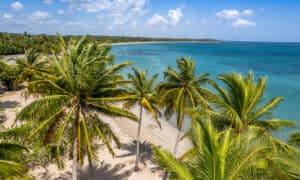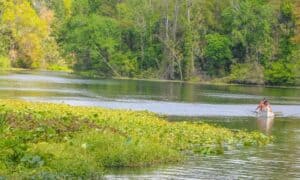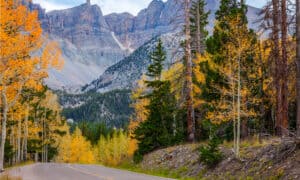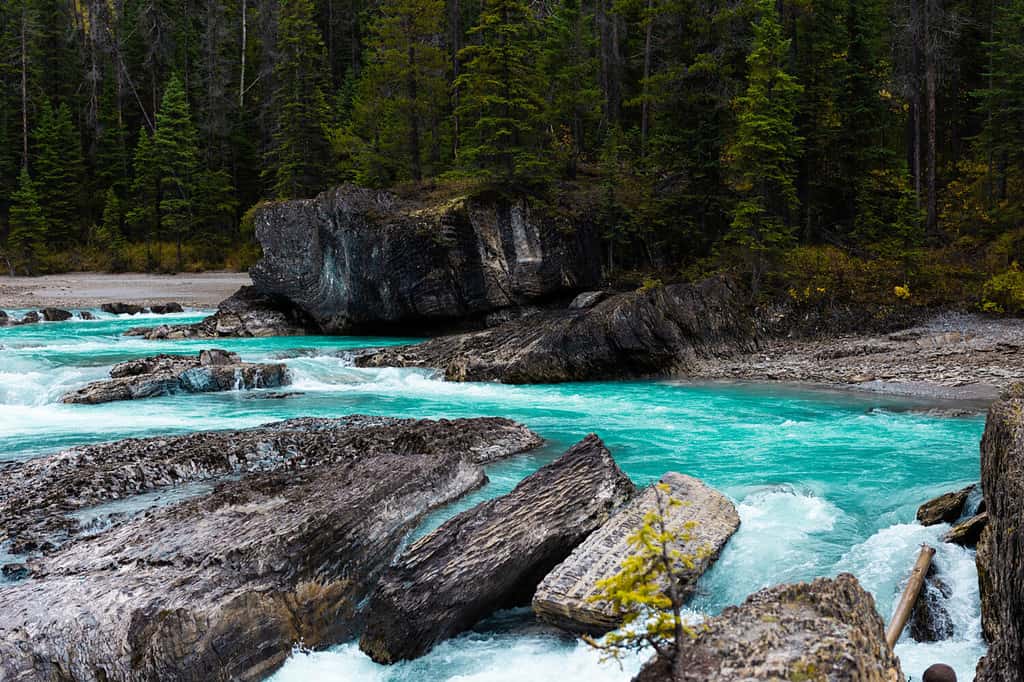
There’s no doubt that Yoho National Park is gorgeous, but that isn’t the only reason it’s the best park in Canada.
©Yulia Kreyd/Shutterstock.com
When you think of National Parks in Canada, you may find yourself thinking of Banff National Park or Jasper National Park. While these are great parks, they aren’t the best national park in Canada.
That title goes to Yoho National Park. It gets far fewer visitors every year, closer to 500,000, but it still offers stunning views of the Canadian Rockies, lakes, and even waterfalls.
If you want to see why Yoho is the place to visit this year for an unforgettable adventure, here are eight reasons this park is so amazing.
1. It Lives Up to Its Name
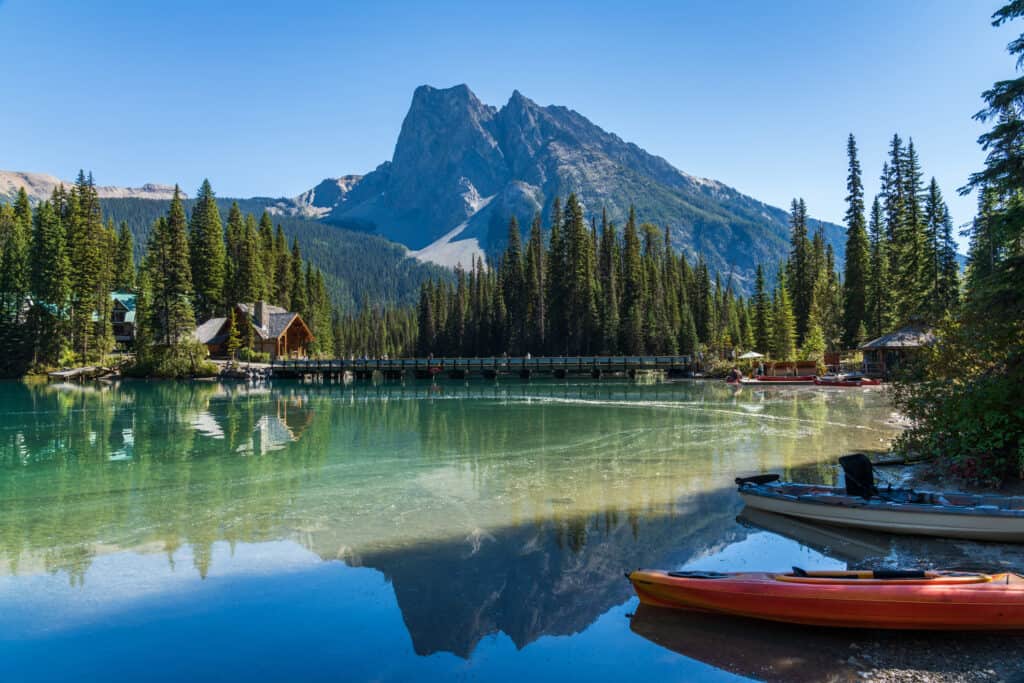
Canoeing on Emerald Lake on a summer sunny day is a relaxing and peaceful way to spend your time at Yoho National Park.
©iStock.com/CHENG FENG CHIANG
The word “yoho” for the park name was taken from the Cree language. It is used as an exclamation. They use it when something is awe-inspiring or amazing. When you first look at Yoho National Park, you’ll find yourself saying, “wow”, “awesome”, or “amazing”. So what better word to name the park than a similar expression from the people that used to live in the area?
This is not a park that will disappoint you. It stretches out over 300,000 acres. Within the park are plenty of different options for scenery. There are rivers, lakes, falls, and ice fields to explore. You can also explore the mountains in the park that make up part of the Canadian Rockies.
Every new place you explore in the park will leave you feeling stunned and inspired. You’ll find yourself appreciating wildlife and the natural world around you. And the feeling will come back every time the sun shifts or you come across another area of the park.
2. You Can Visit Year-Round
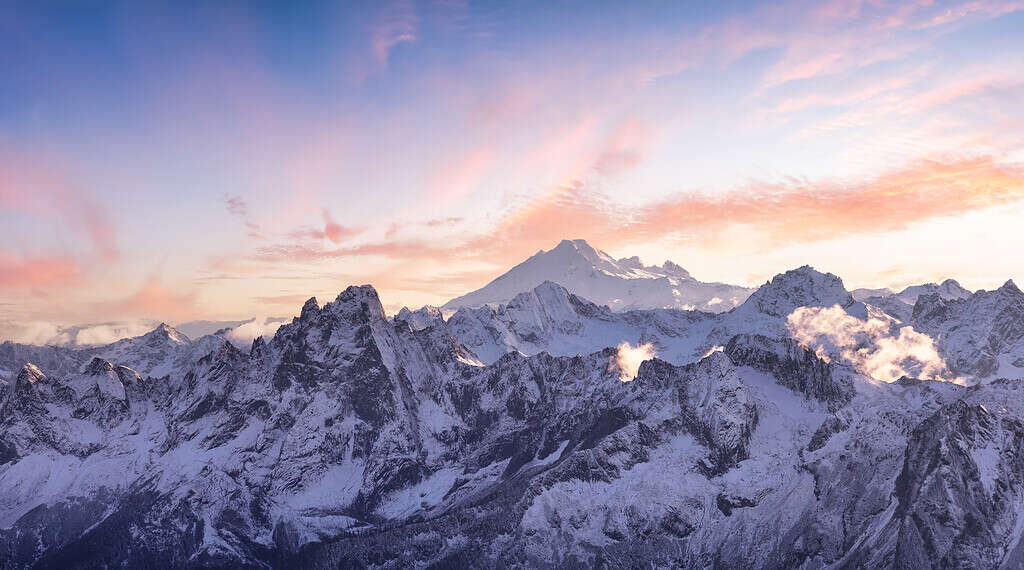
The Canadian Rocky Mountains covered in snow isn’t a sight you’re likely to forget anytime soon after seeing it.
©Christiannafzger/ via Getty Images
While summer is undoubtedly the most popular time to visit, it’s not the only option. The park is open throughout the year. Each season offers something different when it comes to scenery and activities.
Spring
Spring is the time to stop and enjoy the flowers. Plants are blooming, beautiful smells fill the air, and young animals are wandering the park.
A lot of the area will still be covered in snow and ice. This can make it difficult to get to the far reaches of the park. But you won’t be disappointed in the parts you do get to see.
There aren’t as many people in the park during spring. It’s one of the best times to go and enjoy the park in peace. Move quietly through the area and you might come across some animals that you wouldn’t otherwise get to see.
Summer
Summer is the perfect season for hikes and getting on the water. Rent a canoe or bring your own and swim through the lakes. Or, try your skills at some of the more technical and advanced hikes within the park.
If you’re more of a casual outdoor person, you don’t have to worry about getting overwhelmed. While there are plenty of technical and challenging hikes, there are just as many, if not more, calm and relaxing trails. Just spend time enjoying nature as you walk, and don’t worry about trying to catch your breath or making it to the top of a cliff in one piece.
Fall
If you like cooler weather, fall is a great time to visit. Depending on when you go, there are some trails closed as snow and ice start to make them dangerous.
However, a lot of the main attractions, including Emerald Lake, still stay open through the season. Get on the water, enjoy the cool breezes, and explore the rest of the park.
If you’re a fan of looking at trees as they change color, then you have even more of a reason to visit the park. Take in the mountainsides as they start to turn speckled with reds, oranges, and yellows. If you want an even better view and feel adventurous, you can follow one of the trails up in the mountains.
Winter
In winter, a lot of the trails are covered in snow and ice. This is the perfect time for snowbirds to get out and explore the park. It’s usually a time when the park is less populated, as it’s not a very popular time for people to travel.
But there’s plenty to do still. Skiing and snowshoeing are big activities in the park from December to March. The park even keeps up with the trails, grooming them roughly twice a week depending on conditions.
For someone just wanting to take in the sites of the park, you don’t want to miss the snowy landscape. Trees covered with snow and mist-covered water are sure to amaze you, especially if you aren’t from a normally snowy area. You don’t even have to hike far into the park to get a chance to see some amazing sights.
Emerald Lake is still open to the public during winter. Curl up in the Emerald Lake Lodge while it snows, and then go out and explore the barren landscape once the storm is over. You truly can’t find a more romantic place.
3. It’s Affordable
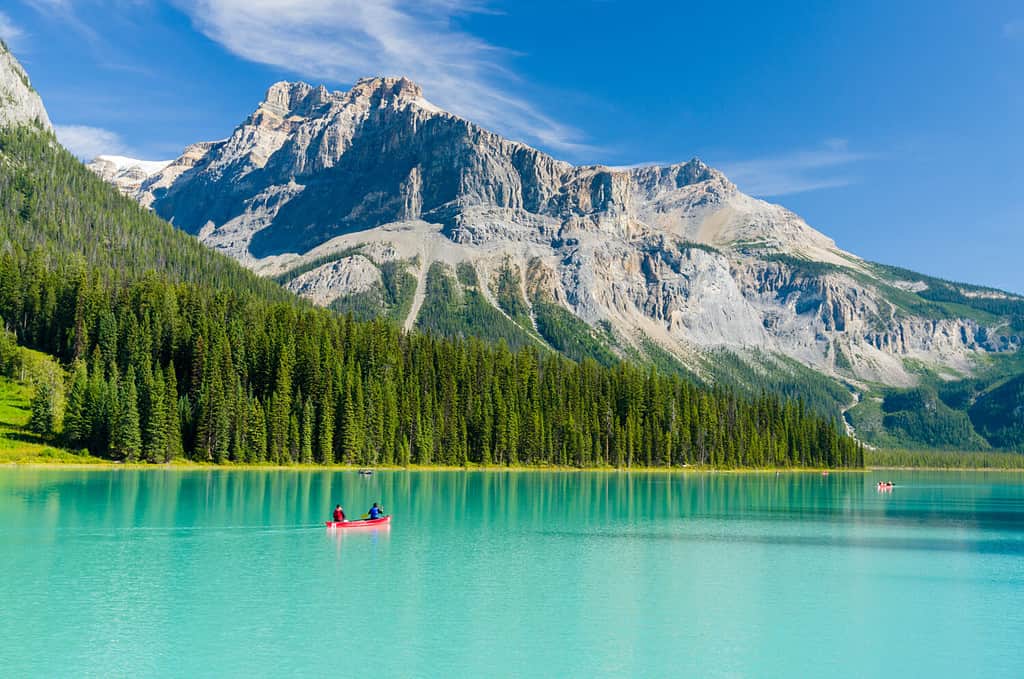
You’ll need more than a day to explore all of Yoho National Park.
©Pongsakorn Teeraparpwong/Shutterstock.com
Like most of the parks in the area, Yoho National Park isn’t very expensive. For adults, it’s only $10.50 a day. Seniors or those who are part of a commercial group only have to pay $9 per day. Children under 17 get in for free and if you have a car full of people, it’s $21 for up to seven people in one group.
There are fees for additional activities such as transport, fishing, and camping, but they are all relatively affordable as well.
If you’re going to visit a lot of the nearby parks, or you’re planning on visiting Yoho several times a year, it may be worth getting a discovery pass as well. It covers a year’s worth of visits from the date of purchase. There are over 80 destinations you can visit with the discovery pass, including Jasper National Park, Banff National Park, Pacific Rim National Park, and of course, Yoho National Park.
The cost is $72.25 for an adult, $61.75 for a senior, and $145.25 for a group of seven. This means that if you’re planning on visiting a park covered by the Discovery Pass more than seven times a year, you’ll save money if you buy the pass.
4. Yoho National Park Is a Hidden Gem
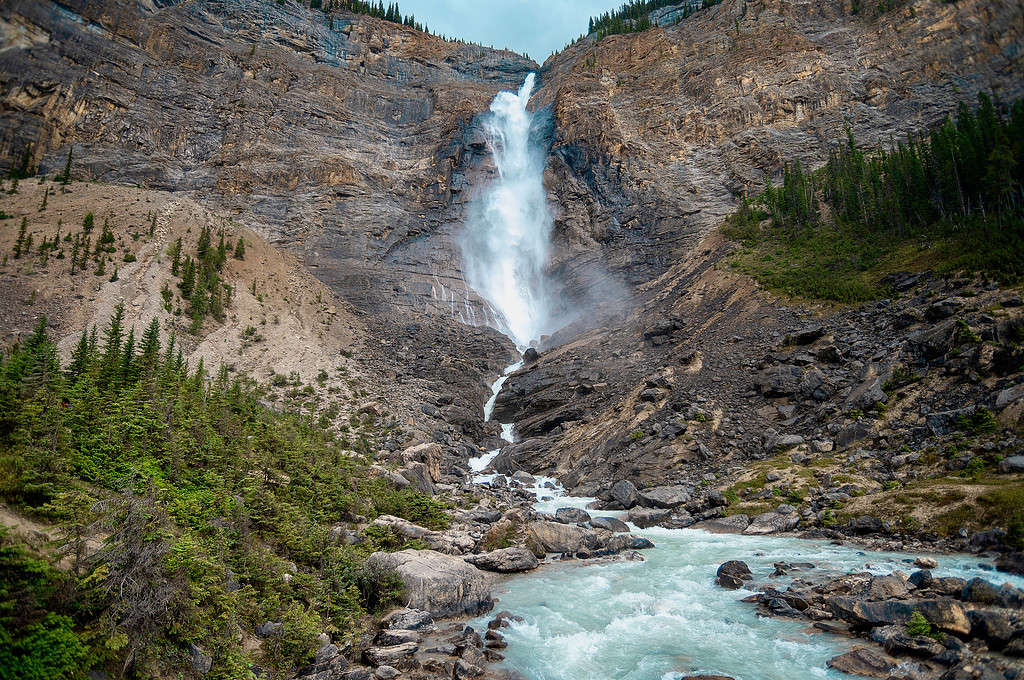
Yoho National Park sees less than one million visitors each year.
©Wirestock/iStock via Getty Images
While Banff and Jasper get several million visitors a year, Yoho National Park sees less than one million a year. Despite the lack of visitors, there’s still so much this park has to offer.
The reason that there aren’t as many visitors to Yoho National Park is because there isn’t as much to do in a short trip. Most things you can see from your car or just a short walk away take less than a day to visit.
If you want to see some of the more beautiful areas of the park, you may need to plan for a hike, or even camping overnight in the park. This doesn’t always appeal to visitors who just want to see some pretty sites, so they pick the national parks that fit their needs better.
If you enjoy the great outdoors and like less crowded parks, Yoho National Park is one of the best options out there. Once you get past the easy-to-access and more popular areas of the park, it’s easy to find a space where you can enjoy nature in peace and quiet. You may even stumble across a few wild animals.
Just be sure you bring your bear spray with you, as there is a chance to bump into them as well. While they’re usually pretty peaceful, at certain times of the year, they can be more temperamental when they are protecting their cubs or when it’s close to hibernation.
5. There’s a Lot Worth Seeing

There are 28 mountain peaks over 9,843 feet in Yoho National Park.
©Janice Chen/iStock via Getty Images
While there might not be a lot to see if you stay on the easy trails through Yoho National Park, there are plenty of areas in the park full of stunning scenery worth seeing at least once in your life.
Mountains
The mountains alone offer a stunning visual. There are 28 mountain peaks over 9,843 feet (3,000 meters) in the park alone. Some of them include peaks called names such as Mount Burgess, The President, The Vice President, Mount Balfour, Mount Stephen, and Mount Goodsir.
Lakes
There’s also Emerald Lake. This is the reason most people come to visit, as it’s only a quick trip. To be fair, it is an absolutely stunning lake with water the same color as its namesake. The area the lake is nestled in creates the perfect scenery. Mountains tower behind it while trees creep right up to the edge of the water.
There are plenty of other lakes as well that will likely be less crowded, but just as beautiful. Lake O’Hara is one. It’s not always easy to get to, as it is often covered in ice, but in the middle of summer, it’s often melted enough to visit.
Sherbrooke Lake is another, far less visited, lake in the park. It requires a bit of a hike. If you’re on your way to Paget Peak, it’s a great place to stop and have a little snack, or go for a cooling dip in the water before continuing your hike.
Natural Water Features
There are plenty of other places to check out besides this popular destination. A spot often overlooked despite being on the way to Emerald Lake is Natural Bridge. It’s a bridge across the Kicking Horse River made naturally from rocks. It’s fun to play on during the summer, but makes for a view you won’t forget during the winter.
The falls in Yoho National Park is another location that you don’t want to miss. Takakkaw Falls is 1,224 feet (373 meters) of rushing water. It’s considered one of the tallest single-drop waterfalls in all of Canada.
Laughing Falls is another waterfall in the park. It’s not quite as big as Takakkaw Falls, but it’s an easy hike. There’s even a campsite at the base if you want to spend the night there!
If you want a longer hike that ends in a waterfall and is likely a little less crowded than the first two, there’s the trail to Twin Falls. It’s another four miles past Laughing Falls, though the hike is still an easy one. At the end, you’ll come across two 262-foot waterfalls. Depending on the time of year you go, one or both may be running.
Finally, if you want more than just a few trickles of water, check out Wapta Falls. It’s only 59 feet tall, but it stretches out across 351 feet. It’s stunning in both the winter and the summer, with either water rushing over the rocks, or icicles forming across the wide stretch of water.
A Hidden Town
There’s even a town located inside the park. It’s called Field. There isn’t a lot to do, and it’s a rather small town with only 200 people, but it does have some places worth exploring. You’ll find some historic homes, artisan shops, and a few places to eat.
6. The Park Offers Private Tours
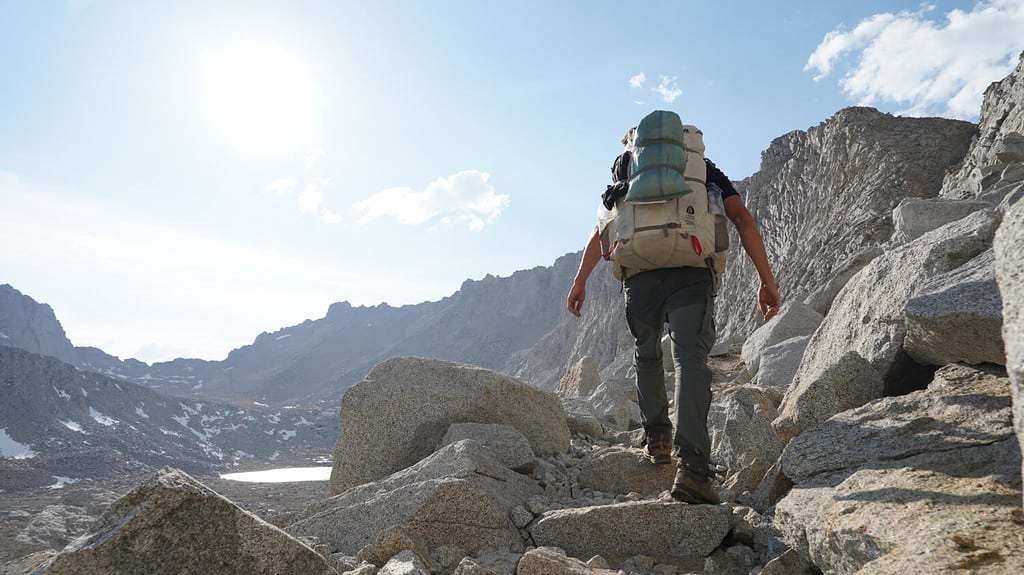
Explore the entire park with the help of experienced guides.
©chrisontour84/Shutterstock.com
For those who want to explore the park, but aren’t sure how to pick where to visit, there is always the option of a tour. The park offers private and group tours, depending on your preferences and your budget. Some tours will simply take you around the most beautiful areas in the park if you want to make sure you see all the sites.
However, if you want to have a bit more of an adventure, you can consider some of the other tours. There are ones focused on canoeing, hiking, camping, winter wonderland scenery, skiing, and much more. No matter what you enjoy doing, you can find a group or a private guide to take you around.
This is a great way to make the most of your trip. They can show you some hidden gems you would have otherwise missed, and help you see as many of the sites as you can in a short window. Plus, with an educated tour guide, you get to learn more about the area and get a bit of history you might not otherwise have the opportunity to learn.
7. Nearby Towns and Parks Offer Plenty of Lodging
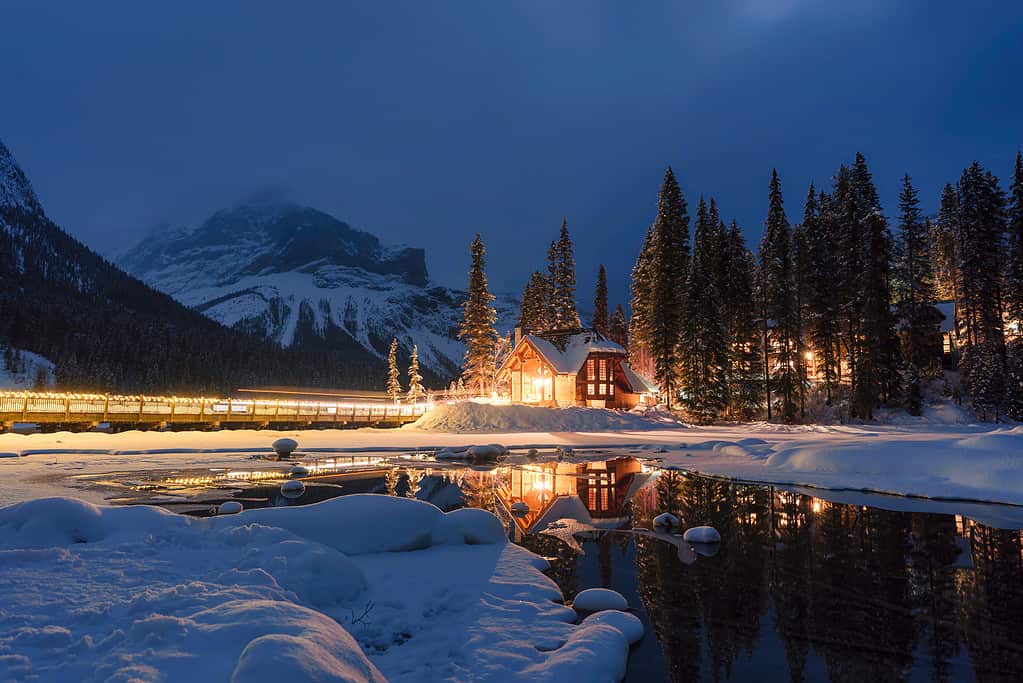
Emerald Lake in the winter offers visitors a cozy and comfortable experience.
©Mumemories/iStock via Getty Images
Whether you want to stay in the park, or just nearby, there are plenty of options. For a more natural and less glamorous place to stay, there are of course all the campsites in the park. You can choose to stay near the lakes, or some of the waterfalls.
If you want something cozy and comfortable, there are also plenty of lodges in the park. Emerald Lake Lodge is a hot spot that’s often booked due to it sitting right on the edge of the water. Though this is a great spot during the summer, it’s the perfect cozy spot in the winter. Lake O’Hara Lodge and Cathedral Mountain Lodge are also great places.
For those wanting a bit more of a town feel, but also want to stay in the park, the Truffle Pigs Lodge is also a great option. It has a little gift shop and there are plenty of comforts but it still lets you be a part of the national park.
For places to stay outside of Yoho National Park, it’s a bit of a drive. Golden and Banff are the closest two full-service towns to Yoho National Park. There are plenty of hotels in these towns, but it’s best to book far in advance as they are a hotspot for other national parks as well.
8. You’ll Feel Like a Part of the Wilderness
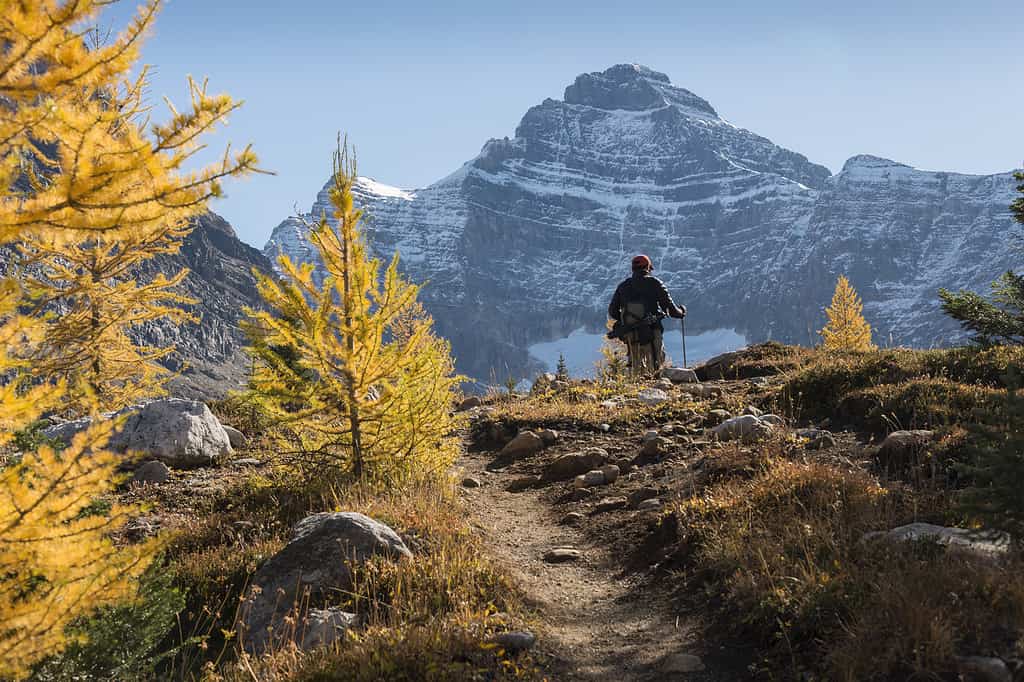
If you want to see some of the more beautiful areas of the park, you may need to plan for a hike.
©Janice Chen/iStock via Getty Images
Is it a national park worth visiting if you don’t feel like you’re one with nature? With the other national parks nearby so busy, sometimes it’s not easy to feel like you’re part of the wilderness. Sometimes, you feel disconnected and still part of everyday life with hundreds of people around you.
If you’re willing to hike a little bit and get away from the main attractions, that isn’t a problem with Yoho National Park. There are plenty of places less heavily populated. During the off-season, you may even find yourself alone a majority of the time.
It’s the perfect place to get outdoors and feel at one with nature.
| Number | Reasons Yoho National Park Is the Best |
|---|---|
| 1 | It really is awe-inspiring |
| 2 | You can visit at any point in the year |
| 3 | It’s a pretty cheap park and is included in the Discovery Pass |
| 4 | Not as many people visit this park as some of the others nearby |
| 5 | There’s a lot to see if you don’t mind walking a bit |
| 6 | The park offers private and group tours |
| 7 | There are plenty of places to stay in and around the park |
| 8 | You can feel connected to nature |
The photo featured at the top of this post is © Jun Qian/ via Getty Images
Thank you for reading! Have some feedback for us? Contact the AZ Animals editorial team.




